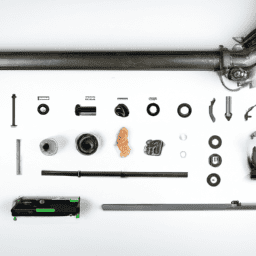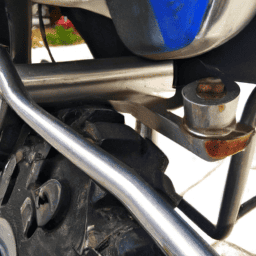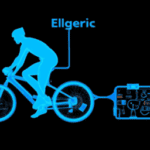Interested in understanding how electric bicycles function? You’ve arrived at the perfect spot. E-bikes, as they’re commonly known, are gaining widespread adoption for their ease of use and environmental benefits. Additionally, they enable users to travel longer distances with minimal exertion. But what’s the mechanism behind their operation?
Let’s take a closer look at the basic components and functions of an e-bike. At its core, an e-bike is a regular bicycle with the addition of an electric motor and battery. The motor provides extra power to the bike, making it easier to pedal and increasing the bike’s speed. The battery stores the energy needed to power the motor, allowing riders to travel farther distances without getting tired.
Understanding the way these components work together is key to understanding the mechanics of an e-bike. So, let’s dive in and explore the inner workings of this innovative mode of transportation.
Key Takeaways
- An electric bicycle is a regular bicycle frame with an electric motor and battery added for extra power and longer distances.
- The motor is controlled by a microprocessor receiving signals from sensors, with torque and cadence sensors being the two types available.
- Lithium-ion batteries last for 500-1000 charging cycles and take 2-8 hours to charge, with the lifespan varying based on usage and storage.
- Power management is critical for optimal sensor and motor performance, and the e-bike offers health benefits, zero emissions, and cost-effectiveness compared to traditional bikes.
Basic Components of an Electric Bicycle
Let’s take a quick look at the basic components that make up an electric bicycle! One of the most important aspects of an electric bicycle is its frame design. Typically, electric bicycles have a similar frame design to regular bicycles, but with the addition of a battery and motor. It’s important to consider the frame design when purchasing an electric bicycle, as it can affect the handling and stability of the bike.
In addition to the frame design, it’s crucial to keep up with regular maintenance of an electric bicycle. This includes checking the battery and motor components, as well as keeping the chain and brakes in good condition. Proper maintenance not only ensures a smooth and safe ride, but also extends the lifespan of the bike.
So now that we’ve covered the basic components and maintenance, let’s dive into how the motor works.
How the Motor Works
The motor mechanism of an e-bike moves magnetically, making the machine much more efficient. Here’s how it works:
-
The motor is controlled by a microprocessor that receives signals from the bike’s sensors. This allows the motor to adjust its speed and power according to the rider’s pedaling and the terrain.
-
A torque sensor is usually located in the bike’s bottom bracket and measures the amount of force being applied to the pedals. This information is sent to the motor control unit, which adjusts the motor’s output accordingly.
-
There are two types of e-bike motors – direct drive and geared. Direct drive motors are quieter and more efficient, but they are also heavier and have less torque. Geared motors are lighter and have more torque, but they are noisier and less efficient.
Understanding how the motor works is crucial in maximizing the performance of your e-bike.
Now, let’s move on to the next section and learn about how the battery works.
How the Battery Works
The battery of an e-bike is a crucial component that powers the motor and allows riders to travel further distances without getting tired. The battery lifespan varies depending on the battery type and usage, but on average, a lithium-ion battery can last between 500 and 1000 charging cycles. This means that if you ride your e-bike every day and charge it every night, the battery will last around 2-3 years. However, if you take good care of your battery and charge it only when it’s needed, the lifespan can be extended to up to 5 years.
To keep your battery at its best, it’s important to know its charging time, which can be anywhere from 2 to 8 hours, depending on the battery’s capacity and the charger used. Most e-bike batteries take around 4 hours to fully charge, but some high-capacity batteries can take up to 8 hours. When charging your battery, make sure to use the charger that came with your e-bike and follow the manufacturer’s instructions. Overcharging or undercharging can shorten the battery’s lifespan and affect its performance. With a fully charged battery, you’ll be ready to explore new horizons without worrying about running out of power. Now, let’s dive into the next section and learn how pedal assistance works.
How Pedal Assistance Works
When you pedal an electric bicycle, you might notice that the motor kicks in to provide some extra power. This is thanks to the pedal assistance system, which uses sensor technology to detect your pedaling and adjust the amount of help the motor provides.
Depending on the level of assistance you choose, the motor can give you a gentle boost or a more powerful push. The system also takes into account your pedal cadence, ensuring a smooth and seamless ride.
Sensor Technology
As you pedal your electric bicycle, sensors in the pedals detect your movement and send a wireless signal to the motor to provide assistance. This signal triggers the motor to engage and provide an extra boost, allowing you to effortlessly climb steep hills and ride longer distances.
The sensor technology is an essential component of the electric bicycle because it allows for the seamless integration of human pedaling power and electric motor assistance. To ensure that the sensor technology works effectively, power management is critical.
The sensors and motor rely on a battery to function, and managing the battery’s power usage is essential to achieve optimal performance. The electric bicycle’s power management system is designed to monitor battery levels and adjust the level of assistance provided to the rider. This means that the motor will reduce assistance when the battery is running low to conserve energy. Conversely, when the battery is fully charged, the motor can provide maximum assistance to the rider.
The level of assistance is a crucial aspect of the electric bicycle, and we’ll explore it in the next section.
Level of Assistance
Imagine effortlessly cruising up a hill with the help of your electric bicycle’s level of assistance. The level of assistance of your electric bicycle can be adjusted to meet your desired level of exertion and distance. The level of assistance of an electric bicycle is determined by the type of sensor technology used and the power output levels it can produce.
There are two types of sensors used in electric bicycles: torque sensors and cadence sensors. Torque sensors measure the force you apply to the pedals, while cadence sensors measure the speed at which you pedal.
The power output levels of an electric bicycle depend on the level of assistance you choose. The higher the level of assistance, the more power is delivered to the motor. This means you can go faster and further with less effort. The power output levels are usually displayed on the electric bicycle’s control panel, which allows you to adjust the level of assistance according to your needs.
Now, let’s move on to the next subtopic, which is about the importance of pedal cadence in an electric bicycle.
Pedal Cadence
Adjusting the level of assistance on an e-bike can enhance your riding experience by allowing you to maintain a consistent pedal cadence. This can improve your overall efficiency and comfort. Pedal cadence refers to the number of revolutions per minute (RPM) of the pedals. The ideal cadence for most cyclists is between 80 and 100 RPM.
With an e-bike, you can adjust the level of assistance to maintain this cadence, even when riding uphill or against a headwind. Measuring efficiency is a crucial aspect of cycling, and an e-bike allows you to do just that. By maintaining a consistent pedal cadence, you can monitor your efficiency and power output. This can help you improve your overall cycling performance.
Additionally, riding an e-bike offers numerous health benefits, including improved cardiovascular health and increased muscle strength. With the ability to adjust the level of assistance, you can gradually increase your physical activity and experience these benefits while still enjoying a comfortable ride.
Moving on to the next section, let’s explore the benefits and considerations of owning an e-bike.
Benefits and Considerations
You’ll enjoy the benefits of an electric bicycle, such as effortlessly cruising up hills and through wind, while also considering factors like battery life and range.
One of the biggest benefits of electric bicycles is their environmental impact. Compared to gas-powered vehicles, electric bikes produce zero emissions, making them an eco-friendly option.
In addition to being environmentally friendly, electric bicycles are also cost-effective. While they may have a higher upfront cost than traditional bicycles, they require less maintenance and have lower fuel costs.
However, it’s important to consider the lifespan of the battery when purchasing an electric bike. The battery’s lifespan can vary depending on factors such as usage and storage, so it’s important to choose a bike with a battery that meets your specific needs.
Frequently Asked Questions
How long does the battery of an electric bicycle last?
To ensure your e-bike battery lasts as long as possible, consider factors such as temperature, charging habits, and usage frequency. Proper maintenance, including regular charging and storage, can also extend its lifespan.
Can the battery be replaced or upgraded?
Yes, the battery of an electric bicycle can be replaced or upgraded. Proper battery maintenance is important for a longer lifespan expectancy. Seek professional assistance for installation and ensure compatibility with the bike’s specifications.
Is it possible to ride an electric bicycle without pedaling?
Imagine gliding effortlessly down the road on your electric bicycle, feeling the wind rush past your face. Yes, it’s possible to ride without pedaling, but it will decrease Electric bicycle efficiency and increase battery power consumption.
How fast can an electric bicycle go?
An electric bicycle can reach top speeds of up to 28 mph with rapid acceleration, depending on the model and battery capacity. Factors like terrain, weight, and wind resistance can affect overall performance.
Are electric bicycles legal on roads and bike paths?
Ride safely on roads and bike paths with electric bikes, but regulations vary by country and state. Check your local laws before hitting the road. Remember, safety first!
Conclusion
Congratulations! You now have a comprehensive understanding of how electric bicycles work. By breaking down the basic components of an electric bike, including the motor, battery, and pedal assistance, you’ve gained a technical understanding of this innovative mode of transportation.
Overall, electric bicycles offer a variety of benefits, including reduced emissions, increased speed and range, and a more efficient method of transportation. However, it’s important to consider the cost and maintenance requirements before investing in an electric bike.
In conclusion, understanding how electric bicycles work is crucial for anyone interested in this eco-friendly and convenient mode of transportation. With this knowledge, you can confidently ride your electric bike and take advantage of all the benefits it has to offer.
So go ahead and hit the road, using your newfound expertise to navigate your way to success. After all, knowledge is power.
















